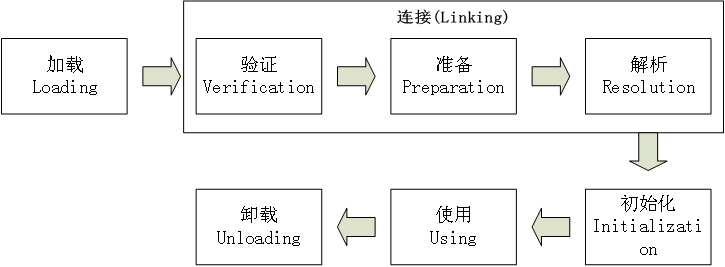想直接要源码的,点这里。
简介
Sharding-JDBC 定位为轻量级 Java 框架,在 Java 的 JDBC 层提供的额外服务。 它使用客户端直连数据库,以 jar 包形式提供服务,无需额外部署和依赖,可理解为增强版的 JDBC 驱动,完全兼容 JDBC 和各种 ORM 框架。
- 适用于任何基于 Java 的 ORM 框架,如:JPA, Hibernate, Mybatis, Spring JDBC Template 或直接使用 JDBC
- 基于任何第三方的数据库连接池,如:DBCP, C3P0, BoneCP, Druid, HikariCP 等
- 支持任意实现JDBC规范的数据库。目前支持 MySQL,Oracle,SQLServer 和 PostgreSQL
前言
本例只是简单实现了 Sharding-JDBC 中的读写分离功能,请注意。
所用到的技术栈及版本:
- SpringBoot 2.0.4
- Spring Data JPA
- HikariDataSource
- Gson 2.8.5
- lombok 1.16.22
- mysql-connector-java 5.1.46
- sharding-jdbc-core 2.0.3
主要部分
配置文件:application.yml
1 | # JPA |
这里用的是 springboot2.0 默认的数据库连接池 HikariDataSource
load-balance-algorithm-type:
查询时的负载均衡算法,目前有2种算法,round_robin(轮询)和random(随机)master-data-source-name: 主数据源名称slave-data-source-names: 从数据源名称 多个用逗号隔开
存放数据源数据:ShardingMasterSlaveConfig.java
1 | package com.example.shardingjdbc.config; |
用了 Lombok 显得简便了些
配置数据源:ShardingDataSourceConfig.java
1 | package com.example.shardingjdbc.config; |
主要的配置内容就是这些了,接下来我们编写几个方法来测试。
测试
- 先创建一个实体类
大众测试实体类,我选 UserEntity:
1 | package com.example.shardingjdbc.entity; |
同样,Lombok 不可少。由于之前 application.yml 中 ddl-auto 设置的是 create,所以每次重启程序都会重新生成空表。
我选择
JPA的原因就是它作为简单测试最适合不过了1
2
3
4
5
6
7
8
9
10package com.example.shardingjdbc.repository;
import org.springframework.data.jpa.repository.JpaRepository;
import com.example.shardingjdbc.entity.UserEntity;
public interface UserRepository extends JpaRepository<UserEntity, Integer> {
}只要继承
JpaRepository就可以了,我们只需要使用它的基本方法即可。写个
Controller类1
2
3
4
5
6
7
8
9
10
11
12
13
14
15
16
17
18
19
20
21
22
23
24
25
26
27
28
29
30
31
32
33
34
35
36
37
38
39package com.example.shardingjdbc.controller;
import java.util.List;
import javax.annotation.Resource;
import org.springframework.web.bind.annotation.PostMapping;
import org.springframework.web.bind.annotation.RestController;
import com.example.shardingjdbc.entity.UserEntity;
import com.example.shardingjdbc.service.UserService;
import com.google.gson.Gson;
/**
* 用户测试类
*
* @author ffj
*
*/
@RestController
public class UserController {
@Resource
private UserService userService;
@PostMapping("/save")
public String saveUser() {
UserEntity user = new UserEntity(1, "张三", 22);
userService.saveUser(user);
return "success";
}
@PostMapping("/getUser")
public String getUsers() {
List<UserEntity> users = userService.getUsers();
return new Gson().toJson(users);
}
}Service 就不贴了,就是简单调用。
方便查看测试结果,这里用 Gson 来转化为 Json 输出。
- 启动程序
从上到下看启动日志:
1 | 2018-12-27 15:16:12.907 INFO 2940 --- [ main] com.zaxxer.hikari.HikariDataSource : HikariPool-1 - Starting... |
可以看出有两个数据源,没毛病。
1 | Hibernate: drop table if exists user |
程序启动 user 表重建,没毛病。
1 | 2018-12-27 15:16:15.198 INFO 2940 --- [ main] o.s.w.s.handler.SimpleUrlHandlerMapping : Mapped URL path [/**] onto handler of type [class org.springframework.web.servlet.resource.ResourceHttpRequestHandler] |
端口为配置文件中指定的 8888,启动成功日志打印,也没毛病,成功。
注意:启动程序前别忘了先自行创建数据库!
现在我们在 slave 库中执行以下提供的 sql 文件,或者自行创建对应表(表结构必须一致,可以先建库然后从主库中复制已生成的表),并在其中添加数据。
1 | /* |
好了,从库中表和数据都有了,进入正题。
测试主库插入数据
我用的是Postman:选择POST方式,url:localhost:8888/save,点击Send。1
Hibernate: insert into user (age, name, id) values (?, ?, ?) // 打印出这条日志
返回
success,成功执行。查看主数据库中user表数据,确实插入,成功!测试从库查询数据
还是Postman:选择POST方式,url:localhost:8888/getUser,点击Send。1
Hibernate: select userentity0_.id as id1_0_, userentity0_.age as age2_0_, userentity0_.name as name3_0_ from user userentity0_ // 打印出这条日志
返回:
[{"id":2,"name":"李四","age":23}],数据正确,成功!
以上就是 SpringBoot2.0 + ShardingJDBC 实现数据库读写分离的全部内容了。












